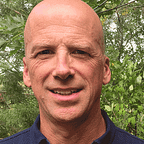Why being not sure is the surest way
I don’t remember when I learned to walk. I don’t remember when I learned to talk. I don’t remember when I learned to read. I doubt you do either.
I do remember what it felt like to not have time to get back into the house, and to feel my pants getting warm, then quickly turn cold. The musty wet concrete, the crunching of pea gravel, the sense of my awareness of a world outside of me, and me inside of it, created synaptic connections that persist. I learned to sneak into the narrow gap between houses to prevent a repeat embarrassment.
Was I taught to be embarrassed or to use or not use the outdoors to relieve my bladder? I have no idea.
What I do know is we are shaped by our parents, environment, and experiences, and thus come to see the world in certain ways, mostly hidden from us, deeply embedded. If you’re a parent and you’ve ever found yourself repeating a phrase or action from your parent, you know what I’m talking about.
So how do we make sense of our environment when we aren’t fully aware of our sense-making?
Unfortunately, we’re kind of wired to confirm our certainties, rather than seek uncertainties. If we’re certain, then clearly, whatever we’re doing or thinking makes sense, right?
Sure, it’s confirmation bias, but we usually know when we’re right or wrong, right? Well, Dunning and Kruger point out that we are blissfully ignorant of our ignorance, our cognitive biases leaving us feeling good thinking we are smarter than we actually are.
You’re reading this, so you can read. Let’s unpack some of those smarts now. Stop reading for a moment and figure out how it is that you are able to decode the shapes on the screen into words and ideas and concepts you can understand.
Could you do it? Could you bring to awareness your decoding and meaning-making processes? Could you now teach someone else how to read? Will you assume they will go about doing it in the same way that you did?
Reading is one of those things that falls into what we call tacit knowledge (and yes, explicit knowledge like phonics). We know what reading is and how to do it, though we can’t quite explain it. Like breathing.
Knowledge does not just exist as “what” and “how” in your head, though that’s the predominant model of education. We should also know “where” to retrieve knowledge. George Siemens suggests that knowing in this digital age, includes the ability to know more. We may know others who have the knowledge we need and we may know where to go physically and digitally to learn more.
Schooling presumes a womb-like metaphor, a long gestation, and then the social birth completed with a graduation, and a commencement ceremony, a beginning.
The ways we do school create some of the mental models we use to make sense of the world. Like learning to walk, talk and read, however, we are not often aware of the mental models we are using, and even when we are aware of things like biases, it does not mean that we refrain from committing them.
As an educator, I don’t know all have I done to prepare young people to walk in the world, to talk in the world, and to read their way in the world. But that won’t stop me from trying to get better at it.
